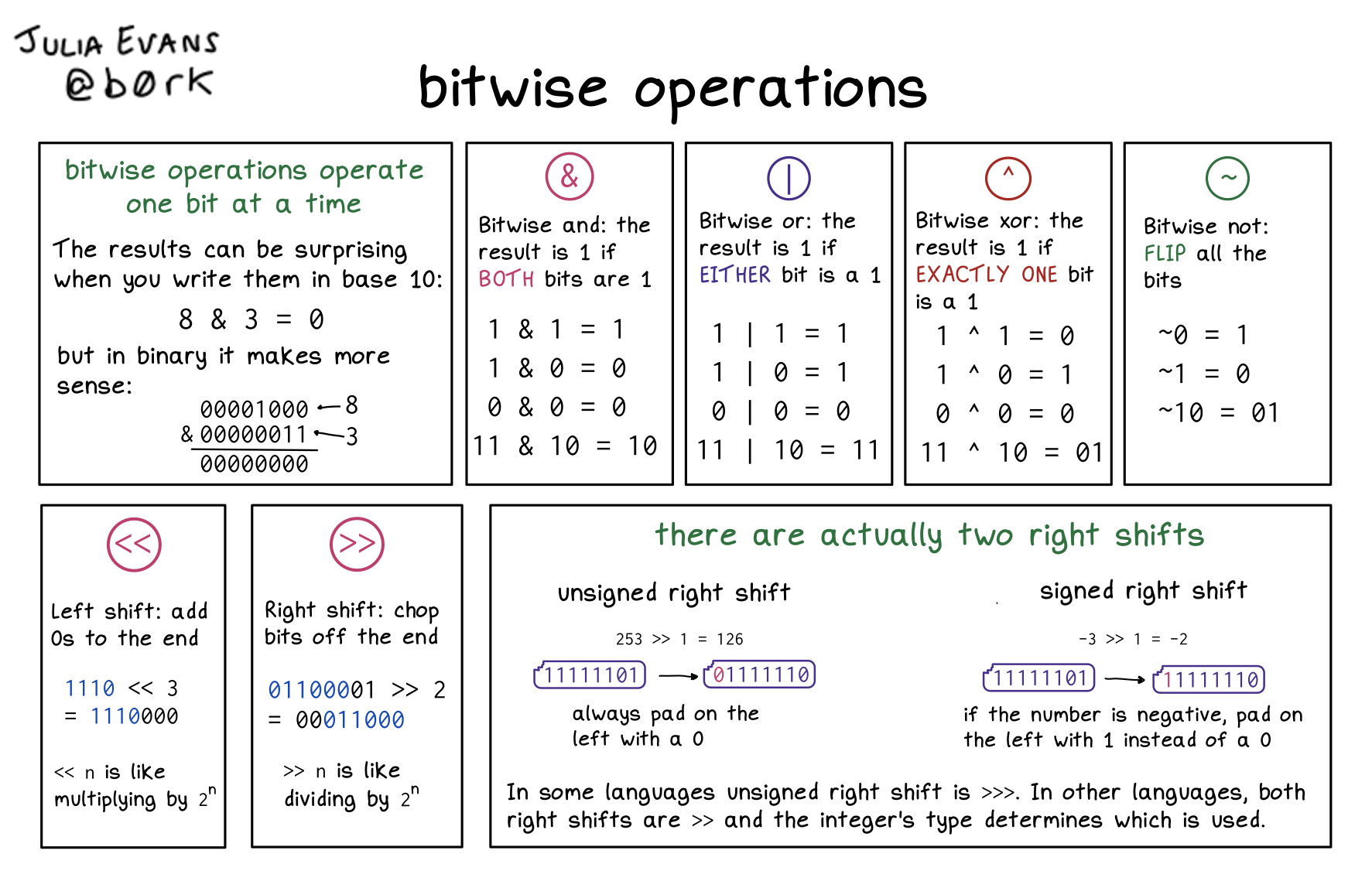
Here's a preview from my zine, How Integers and Floats Work! If you want to see more comics like this, sign up for my saturday comics newsletter or browse more comics!
 browse more comics!
get the zine!
browse more comics!
get the zine!
read the transcript!
bitwise operations operate one bit at a time
The results can be surprising when you write them in base 10:
8 & 3 = 0
but in binary it makes more sense:
00001000 (8)
& 00000011 (3)
= 00000000
&
Bitwise and: the result is 1 if BOTH bits are 1
1 & 1 = 1
1 & 0 = 0
0 & 0 = 0
11 & 10 = 10
|
Bitwise or: the result is 1 if EITHER bit is a 1
1 | 1 = 1
1 | 0 = 1
0 | 0 = 0
11 | 10 = 11
^
Bitwise xor: the result is 1 if EXACTLY ONE bit is a 1
1 ^ 1 = 0
1 ^ 0 = 1
0 ^ 0 = 0
11 ^ 10 = 01
~
Bitwise not: FLIP all the bits
~0 = 1
~1 = 0
~10 = 01
«
Left shift: add 0s to the end
1110 <<< 3 = 1110000
<< n is the same as multiplying by 2^n
»
Right shift: chop bits off the end 01100001 » 2 = 00011000
>> n is the same as dividing by 2^n
there are actually two right shifts
unsigned right shift
253 >> 1 = 126
11111101 -> 01111110
always pad on the left with a 0
signed right shift
-3 >> 1 = 2
11111101 -> 11111110
if the number is negative, pad on the left with 1 instead of a 0
In some languages, unsigned right shift is »>. In other languages, both right shifts are » and the integer’s type determines which is used.
Saturday Morning Comics!
Want another comic like this in your email every Saturday? Sign up here!
